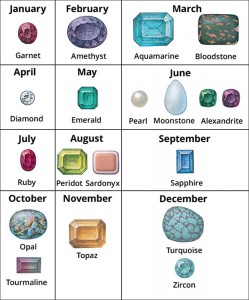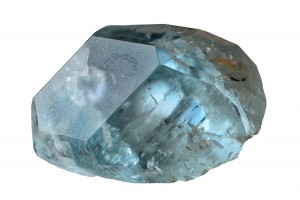November’s Topaz
Monday, November 11th, 2019November 11, 2019
If your birthday is in November, your birthstone—the gem associated with the month of your birth—is the topaz. Topaz is a compound of aluminum, fluorine, silicon, oxygen, and hydrogen. The mineral is commonly white or light colored, but trace impurities can give topaz crystals a wide variety of colors. Topaz is often cut into gems, and its myriad colors give it a lovely versatility in jewelry.
The ancient Greeks believed topaz increased physical strength. In the Middle Ages, topaz was worn to ward off danger, break magic spells, or maintain good health. Topaz was also thought to improve eyesight and at times make a person invisible. People thought that beneath a pillow, topaz prevented nightmares, and in a home the gem protected from fires. Gold-colored topaz was thought to attract wealth as well as the favors of royalty or high government. In India, topaz was believed to encourage long life, beauty, and intelligence. “Imperial” topaz was a favorite gem of the Russian czars.
Small amounts of topaz occur in both igneous rocks (rocks formed when molten rock cools and solidifies) and metamorphic rocks (rocks formed by heat and pressure). Jewelers cut transparent topaz crystals into gems. The most desirable topaz gems range in color from completely colorless to gold, orange, blue, and pink. Exposing some topaz crystals to heat or radiation can dramatically enhance or even change their color.
Jewelers sell blue topaz as a substitute for the gem aquamarine (a birthstone of March). Citrine, a yellow or brownish variety of quartz, is sometimes sold as a substitute for topaz. Topaz is found in many parts of the world. Brazil produces most of the world’s gem-quality topaz. Many museum collections have large, beautiful topaz crystals that weigh hundreds of pounds or kilograms. The gem gallery at the National Museum of Natural History at the Smithsonian Institution in Washington, D.C., is home to the 48.86-carat Whitney Flame Topaz. It is one of the finest imperial topaz gemstones in the world, notable for its large size and fiery red color.

Click to view larger image
Birthstones, according to tradition, bring good luck when worn by a person born in the associated month. Credit: WORLD BOOK illustrations by Paul D. Turnbaugh
According to tradition, a birthstone brings good luck to a person born in its month. Each birthstone also corresponds to a sign of the zodiac. The belief in birthstones may have come from a Bible story about Aaron, the first high priest of the Israelites. The story describes Aaron’s breastplate, which was decorated with 12 precious stones. Early writers linked these stones with the 12 months of the year and the 12 signs of the zodiac. The custom of wearing a stone that represented a person’s zodiac sign probably originated in Germany or Poland in the 1700′s.




